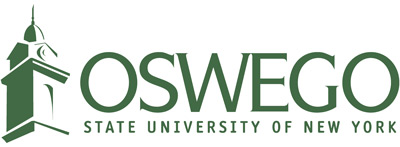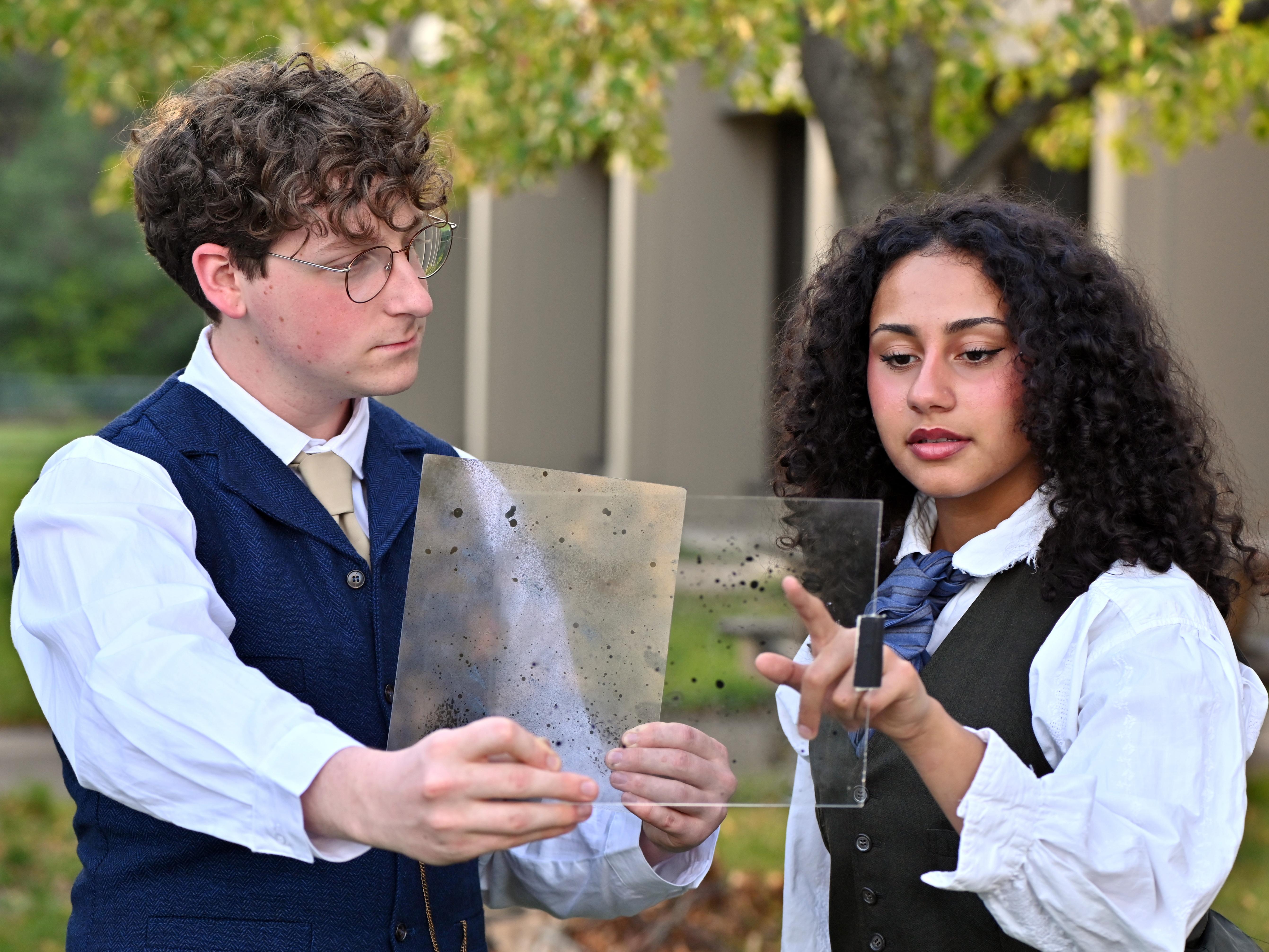Cameron Humphrey as Peter Shaw and Chelli Lopez as Henrietta Leavitt discuss astronomical discoveries in this rehearsal photo for "Silent Sky."
SUNY Oswego’s Theatre Department is showcasing how art and science intersect in their production of “Silent Sky,” running Oct. 15 to 18.
“Silent Sky” follows astronomer Henrietta Leavitt's discovery of the distance of the universe using Cepheid variable stars.
Director and theatre professor Jonel Langenfeld said her main goals with “Silent Sky” were to “highlight the connection between art and science and to honor women, especially in the sciences that were disregarded for so long.”
“You cannot have science without art,” Langenfeld said. “Because art inspires creative imagination. It creates visualization. It inspires. You don’t have the theory of relativity by Einstein without imagination. We don’t fly to the moon. We don’t have NASA. We wouldn't have had that without music or imagining that it could be true.”
The production’s stage manager, Sarah Bolen, is a zoology major who noted that art and science connect in her own life.
People always say science is not creative, Bolen said, but “It's so far from the truth. You need to have so much creativity to be able to come up with ideas, come up with questions. That’s what science is, trying to find out how things work and what we can do.”
The scenic crew is also highlighting the world of science and space in “Silent Sky.” “The stage is a big galaxy because Jonel really wanted a lot of the spiral action,” assistant scenic designer Artemis Doyle said. “So me and the lead designer, Sam Renner, decided that doing a galaxy on the floor would give that motion. There's just a lot of colors, an explosion of different colors.”
Astronomical collaboration
The Theatre Department has been working with Oswego's Physics and Astronomy Department to create a realistic telling of the science behind Leavitt’s work. Distinguished Professor of Physics and Astronomy Shashi Kanbur, director of Oswego’s astronomy program, gave a presentation on Leavitt’s work to the cast and crew at rehearsal.
“I feel like it’s so important to highlight people like [Leavitt] because of how amazing her discovery is,” Bolen said. “One of the people we're working with is one of the professors in our physics department, Dr. Kanbur, who literally worked on Henrietta's discoveries and continued her research. And it's so cool just to see how excited he is about it.”
Leavitt’s discovery was partially inspired by her sister’s music, Langenfeld said. When pondering pulsating stars, “She just had this lightbulb moment about ‘omg they pulsate.’ So it’s like a note. And it goes from low to high and then high to low. Like a glissando in music, it increases in its luminosity.”
The cast had learned a lot about Leavitt’s work and how art has affected scientific discoveries in history.
“I know for me personally, I definitely had to learn a lot because I'm playing this really profound and famous astronomer who has accomplished so many things,” Chelli Lopez, playing Leavitt, said. “I feel like I've definitely had to learn a lot about science and just the work that [Leavitt] has done to truly portray her and her accomplishments, and just kind of portray the excitement she felt discovering these things.”
As a theatre major, Ariana Palmer, who plays Annie Cannon, did not see how art and science connected until she worked on “Silent Sky”.
“Yeah, [science and art] go hand in hand. But I think on a deeper level, science in a way is kind of like nature. Like, even in space, there's art,” Palmer said.
“Silent Sky” will have 7:30 p.m. curtains on Oct. 15, 16 and 18, 2 p.m. matinees on Oct. 17 and 18, and a special 10 a.m. senior citizen matinee on Oct. 17.
In addition, Kanbur will present a post-show talkback immediately following the Wednesday evening (Oct. 15) and Saturday evening (Oct. 18) performances of "Silent Sky." Kanbur's research builds directly off Leavitt's groundbreaking work measuring the universe's vast distances that forever changed humanity's understanding of both the heavens and Earth.
Tickets, available via the SUNY Oswego Box Office, are free for SUNY Oswego students. General public tickets are $10, with tickets for youth (ages 3 to 12) and senior citizens costing $5.
-- Written by Natalie Glosek of the Class of 2026




